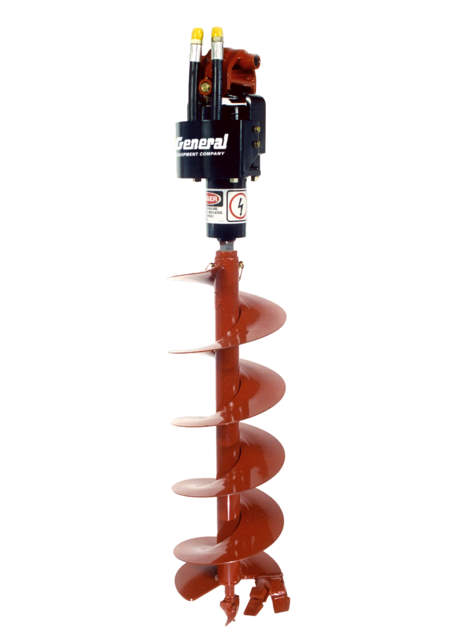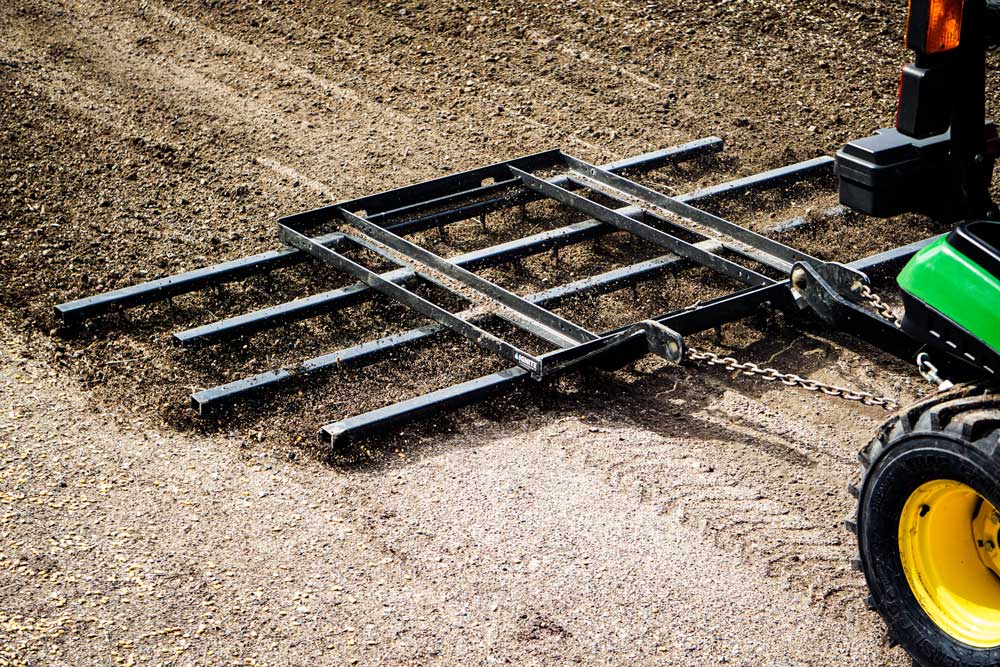Figure Out Your Digger: Tips for Using Your Mini Excavator Hole-Digger Attachment
 From contractors to do-it-yourselfers, earth auger attachments for mini excavators are commonly used by many operators. Thanks to their power, productivity and ease of use, earth augers are the go-to solution for all types and sizes of digging projects. But despite the equipment’s popularity, many operators still don’t have a good handle on how to use their hole diggers. Results from improper use of an earth auger can vary quite a bit. Usually, the outcome is as minor as a poorly dug hole. But more serious consequences such as personal injury or a tipped excavator can also occur. To help avoid any of these scenarios, here are several important tips to review before putting your hole digger to the dirt.
From contractors to do-it-yourselfers, earth auger attachments for mini excavators are commonly used by many operators. Thanks to their power, productivity and ease of use, earth augers are the go-to solution for all types and sizes of digging projects. But despite the equipment’s popularity, many operators still don’t have a good handle on how to use their hole diggers. Results from improper use of an earth auger can vary quite a bit. Usually, the outcome is as minor as a poorly dug hole. But more serious consequences such as personal injury or a tipped excavator can also occur. To help avoid any of these scenarios, here are several important tips to review before putting your hole digger to the dirt.
1. Perform Routine Maintenance
Before using a hole digger, always check the condition of the screw bit and teeth. The screw bit, or pilot point, is the very tip of the auger, and it keeps the auger tracking straight during use. Using an earth auger without a screw bit would be like trying to use a broken drill bit to drill a hole in a piece of steel – there’s nothing that’s going to allow it to track straight. The teeth are located at the bottom of the auger flighting. They are primarily responsible for digging, so if the teeth are worn down or missing, the stress is then placed on the auger flighting, which severely limits performance. In addition to checking the screw bit and teeth, there are other maintenance checks that should be performed less often. Check the owner’s manual for more detail on how to keep the hole digger running in top condition.
2. If Possible, Operate on Level Ground
Hole digger attachments are intended for use on level ground, since uneven terrain can cause instability. But, of course, there are many instances where a hole must be dug on land that is not perfectly flat. In this case, position the mini excavator so that its tracks are pointed downhill – not perpendicular with the slope. Doing so will increase stability and reduce the chance of tipping. Also, set the backfill blade to help keep the machine in place.
3. Don’t Drill Pilot Holes
Over time, some people have devised their own theories on how to dig a hole easier. One of the most common misconceptions is that digging a large-diameter hole can be made easier by first digging a smaller pilot hole. Then, a larger auger can be used to bore the rest of the hole. However, this school of thought is incorrect, and it can actually hinder the digging process, or even cause injury. This is because the auger screw bit can no longer produce directional stability.
4. Don’t Be Forceful with the Hole Digger
One may think that by pushing down harder on an earth auger, it will dig faster. However, this is not the case. Pushing the earth auger too hard into the ground could actually damage the hydraulics. When digging a hole, the earth auger is always working at maximum output, and this process generates heat. If the auger gets stuck and the operator continues to push the machine, more and more heat is generated and, eventually, something has to give. This typically means the bypass valve has to open to redirect hydraulic oil flow, which in itself creates a lot of heat. Eventually, as the hydraulic oil heats up, its viscosity breaks down and premature pump or hydraulic motor failure is likely.
5. Think Before Removing the Auger from the Hole
After reaching the bottom of a hole, the next trick is to remove the earth auger from the ground without letting the hole fill up with loose material. This is best accomplished by stopping the auger’s rotation before removing it. However, if the auger doesn’t retract easily, run it at a slow speed while pulling it out.
Although these five tips are not rocket science, they are commonly overlooked on the jobsite. Take the time to learn them now, and you can save a lot of time and headaches later. Not to mention, you’ll get a “hole” lot more out of your earth auger.
Post written by Dennis Von Ruden, president of General Equipment Co., based in Owatonna, Minn.





Comments are closed here.